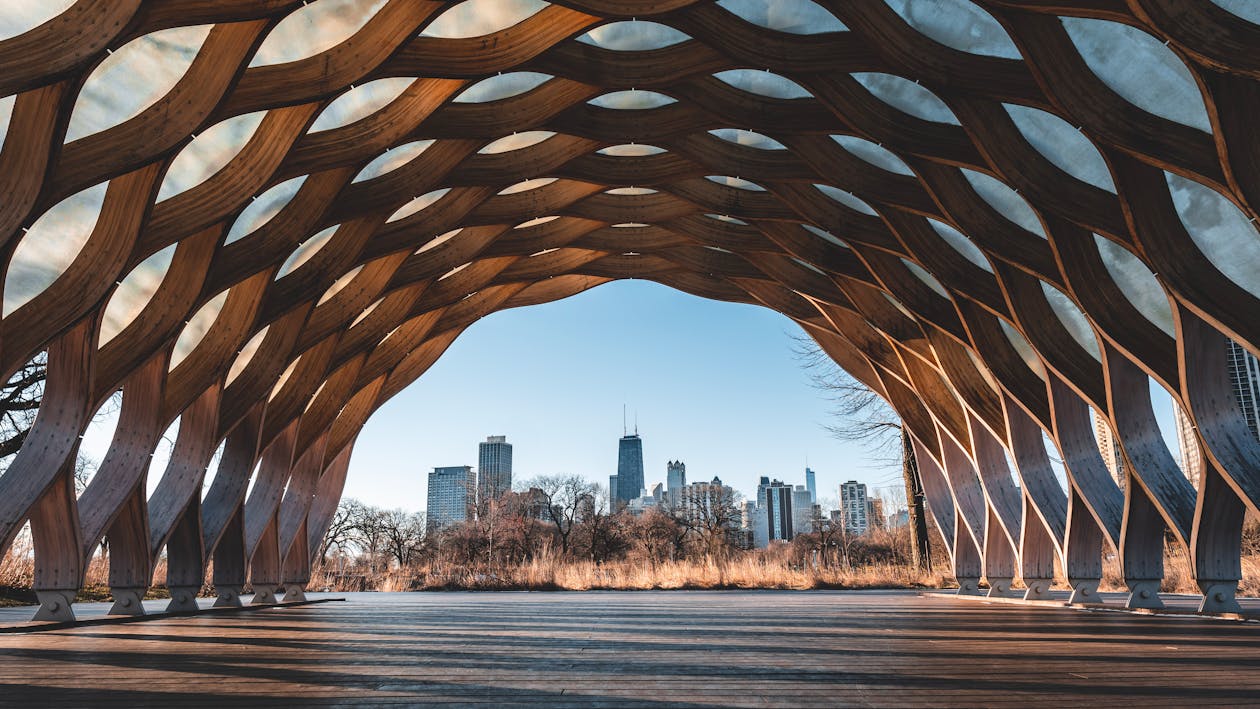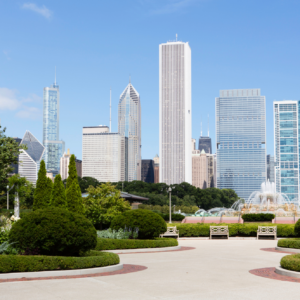
Where to Find Public Art in Downtown Chicago
Published on April 3, 2025
eATLAS has two Adventures dedicated to showing off public art in Chicago. Our Museum Campus Scavenger Hunt visits eight works on the grounds of the Field Museum, Shedd Aquarium, and Adler Planetarium; and @ChiCitiGirl’s free Sculpture Art Tour in the Loop explores seven pieces in the heart of the city.
By Dave Lifton (@daveeatschicago)
The Loop has works by four of the 20 th century’s most celebrated artists. It all started with Pablo Picasso’s untitled piece at Daley Plaza. Unveiled in 1967 with a ceremony that included the Chicago Symphony Orchestra, “The Picasso,” as it’s commonly known, allows viewers to use their imagination to decipher what the 50’ steel sculpture represents.
Practically hidden across Washington St. from Daley Plaza is Joan Miró’s “Chicago.” Originally called “The Sun, the Moon and One Star” and also known as “Miss Chicago,” the female figure—made of steel, bronze, ceramic tile, wire mesh, and concrete—was commissioned at the same time as the Picasso, but funding difficulties meant that it wasn’t installed until 1981.

Marc Chagall’s “America Windows” are a beloved attraction at the Art Institute of Chicago, but his “Four Seasons” are on display on the Dearborn St. side of the Chase Tower plaza. The four- sided mosaic from 1974 depicts Chicago life throughout the year with tiles in more than 250 colors. As of publication time, however, “Four Seasons” is inaccessible due to a lengthy renovation of Chase Tower.
The distinct red of Alexander Calder’s “Flamingo” offsets the black buildings in Ludwig Mies van der Rohe’s Federal Plaza, for which it was commissioned. Also installed in 1974, “Flamingo” featured in the famous parade scene in Ferris Bueller’s Day Off.
Over the course of his seven-decade career, Chicago sculptor Richard Hunt created more than 160 works of public art, including more than 50 displayed in his hometown. On Randolph St. near the Chicago Cultural Center, his “We Will” from 2005 is his updating on the early Chicago motto, “I Will.” The 35-foot steel piece symbolizes freedom and progress through collaboration.
The Washington St. entrance to the Cultural Center has a more whimsical piece. A Bronze Cow is a permanent reminder of a popular 1999 installation of more than 300 colorfully decorated fiberglass cows placed all over the city, with half auctioned off for charity. The choice of the cow drew upon two aspects of Chicago’s history, the importance of the Union Stock Yards to the city’s growth and the myth of Mrs. O’Leary’s cow starting the Great Chicago Fire of 1871. Etched into the cow’s eyes are the Picasso and the Historic Water Tower.
You can also find plenty of public art in Grant Park. Between Cloud Gate (“The Bean”), the interactive Crown Fountain, and Pritzker Pavilion, Millennium Park is a treasure trove unto itself. Near Monroe St. in Butler Field is Richard Serra’s “Reading Cones,” a pair of 17-foot curved steel walls through which one can walk. In the park’s southwest corner is Magdalena Abakanowicz’s “Agora,” a collection of 106 headless, armless figures in various stages of movement. And, of course, there’s the world-famous Buckingham Fountain.
The grounds of the Art Institute of Chicago allow you to see great works without going inside. The Stanley McCormick Memorial Court (North Garden) includes the newly installed “Sharifa” by Simone Leigh, Henry Moore’s “Large Interior Form,” “Cubi VII” by David Smith, and another Calder, “Flying Dragon.” The South Garden includes “Fountain of the Great Lakes,” Lorado Taft’s depiction of five women posed to represent the manner in which water flows through the system on which Chicago sits.
Behind the museum, alongside Columbus Drive, is a reflecting pool with a pair of 40-foot pieces of Minnesota rainbow granite, one horizontal and the other vertical. “In Celebration of the 200th Anniversary of the Founding of the Republic” was created by Japanese-American artist Isamu Noguchi and commissioned in honor of the 1976 American Bicentennial.
Created in 1893, Louis Sullivan’s stone arch for the Chicago Stock Exchange is one of two sections of the building saved when it was demolished in 1972 and brought to the Art Institute (the other is the trading room floor). During the demolition, photographer and preservationist Richard Nickel was killed when part of the building collapsed on him. The arch’s placement on the corner of Columbus and Monroe serves as a reminder about the cost of losing the past in the name of progress.
This list excludes the many statues and murals that can be found throughout the city. To discover those and many more works, visit the Chicago Public Art blog, a project of the late art professor Dr. Wendy Koenig and her partner Christine Badowski.

The Adventure starts when you say it does.
All eATLAS Adventures are designed and built by experienced eATLAS Whoa!Guides. They're always on. Always entertaining. And always ready to go.
Check out our Adventures!
